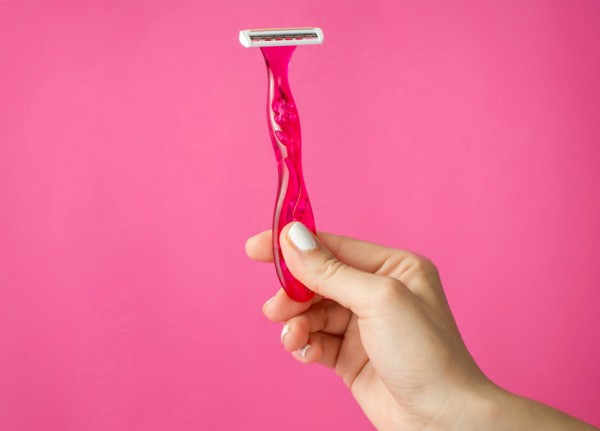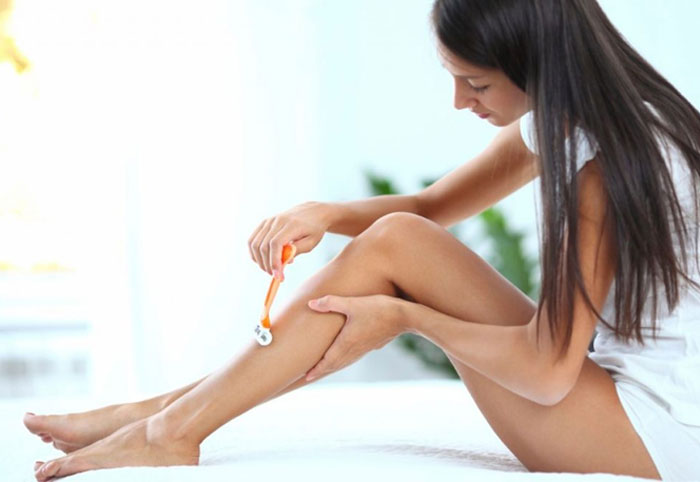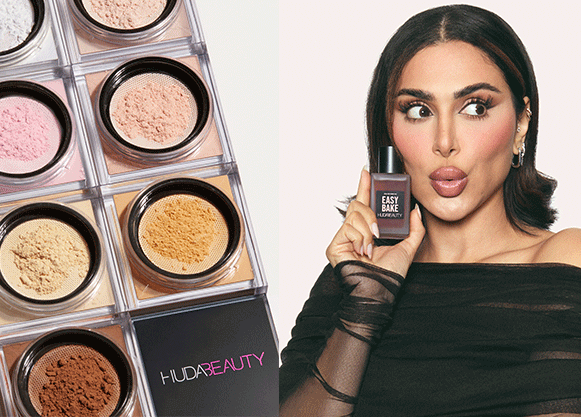BEAUTY
5 Of The Most Common Shaving Myths
Does shaving your legs make the hair grow thicker, darker and faster? We’re got all the answers, so keep reading!
Julia Avellaneda, Justine Feutry - Madame Figaro
31-March-2021

Shaving is the easiest and quickest way to kiss unwanted hair goodbye, especially when salons are closed and waxing is out of reach.
However, knowing the rules and contradictions that come with shaving is essential before you make it your go-to method for hair removal. Below, you’ll find the most common myths about shaving which Paris-based dermatologist Laurence Netter will debunk for you.

1. Shaving regularly makes the hair grow thicker.
True and False. This could be the most common shaving myth. For dermatologist Laurence Netter, it is necessary to distinguish two types of hair: the thin hair and the so-called terminal or adult hair. If we shave the latter, it will sting after shaving. “If you run your finger over your skin, the shaved part is sharper. But after 5-6 days, this feeling passes with the friction of the pants which will soften the hair” she explains. But the doctor specifies that in any case, there will be no thickening phenomenon. "If you shave a terminal hair, it won't make it thicker, just look at men's beards."
2. The more we shave thin hair, the thicker it becomes.
TRUE. For thin hair, whether it's on the face or any other part of the body, it will become thicker after shaving. Once it gets shaved, it will turn into a terminal hair. And so, by definition, will get thicker. “Even from the first pass of the blade, this phenomenon can occur. That’s why it is better to never shave thin hairs ". To avoid this problem, the dermatologist also advises not to wax. “It's better to bleach,” she says.
3. Shaving dries your skin out.
TRUE ... but that's one more reason to think about hydrating. Indeed, if the shaving is not followed byhydration of the skin, skin will become drier. “When you shave dry, you damage the skin's surface hydrolipidic film, which is made up of water and fat. Without compensation with a moisturizer, part of this film is removed, "says the expert. This is why it is necessary to apply a shaving mousse or cream, especially if the skin is already dry. And don’t forget to apply a moisturizer afterwards.
4. Without regular scrubs, you will end up with ingrown hairs.
FALSE. When it comes to ingrown hairs, which "grow back under the skin because they cannot cross the skin barrier and curl up", Laurence Netter shakes our certainties. She explains that, if they have to be ingrown, they will necessarily be. According to her, the only solution is laser hair removal, which gets rid of the hair at its source. "If you do not have the budget for permanent hair removal, just have three to four sessions for the structure of the hair to become finer and therefore to prevent it from being embodied." This does not mean you should give up exfoliating, as the scrub will effectively remove dead cells. In short, regular exfoliation is a habit to integrate into your beauty routine. At home, to limit ingrown hairs, the dermatologist recommends shaving in the direction your hair grows (down the leg), lather up your legs with a moisturizing shaving cream, avoid using a too technical razor (for example with three blades) because it will tend to curl up the hair under the skin, and moisturize your skin afterwards. "According to people, there may also be less ingrown hairs with the use of a depilatory cream."
5. Do not put your razor on the edge of your shower
FALSE. Let the "germ-phobes" rest assured, humidity is not to be avoided. “No need to have a sterilized razor!” Says the dermatologist. “There is an ecosystem of bacteria on the skin. If it is well hydrated with a quality hydrolipidic film, it fights the bacteria around it very well. " It is okay, therefore, to expose your razor to certain levels of humidity, as long as they do not exceed certain limits. The important thing is to ventilate your bathroom regularly and to change your razor blades frequently (every two weeks), as soon as they lose their efficacy.
Recommended

الإعلان عن إطلاق Beauty and Wellbeing Forum المنتدى الأول للجمال والصحّة الجسدية والنفسية في لبنان
8-April-2024

Fragrance Free Easy Bake Loose Powder and Eau de Perfum From Huda Beauty
4-April-2024



